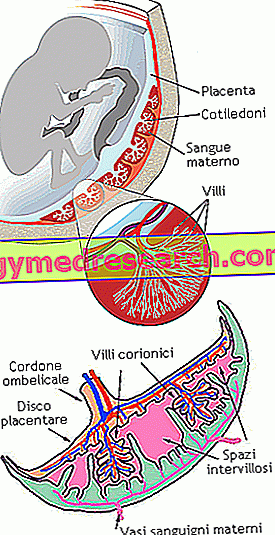Definition
As opposed to tachycardia, bradycardia occurs when heart rate (CF) values fall below the norm (compared to a reference population): to give an example, we talk about bradycardia in adults when the interval of FC is less than 60 bpm (beats per minute). When this value falls below 40 bpm, one speaks instead of severe bradycardia.
Causes
A disruption of the physiological heartbeat can significantly increase or reduce the heart rate; in the case of bradycardia, a heavy reduction in CF may be favored by several elements: obstructive sleep apnea, heart attack, congenital heart disease, cardiac surgical complications, hemochromatosis, drugs (antipsychotics, antihypertensives), rheumatic fever, hypothyroidism, lupus, myocarditis, Hashimoto's disease.
- Risk factors: drug abuse, alcoholism, anxiety, hypercholesterolemia, hypertension, stress
Symptoms
Bradycardia is not always synonymous with an ongoing disease; however, among the most recurrent symptoms of pathological bradycardia, we mention: confusion, chest pain, dyspnea, sleep disturbance, fatigue, general malaise, hypotension, syncope, dizziness, memory lapses.
- Complications: sudden cardiac arrest, heart failure, frequent fainting
Information on Bradycardia - Bradycardia Drugs is not intended to replace the direct relationship between health professional and patient. Always consult your doctor and / or specialist before taking Bradycardia - Bradycardia Drugs.
drugs
BRADICARDIA NOT ALWAYS REFLECTS A PATHOLOGICAL CONDITION: indeed, it is believed that in young sports-practicing patients, a significant reduction in heart rate is absolutely physiological. Clearly the boundary between the "pathological" and the "physiological" is subjective: a decrease in CF values can be considered normal in one patient, but the same value can be pathological for another. In general, it can be said that bradycardia is of pathological significance when heart rate values fall to a level that compromises the physiological supply of blood in the various sites of the body, making it insufficient with respect to the needs required by metabolism. Here, then, that only in this case can bradycardia be a lighted sign of pathologies and the assumption of drugs is essential for the patient's health.
The choice of a treatment rather than another depends on the type of problem responsible for the alteration of the cardiac electrical impulse, the cause and the severity of the symptoms.
Clearly, when the causal element materializes in hypothyroidism or in sleep apnea, its resolution produces the healing of bradycardia.
The implantation of a permanent pacemaker is the extreme surgical therapeutic option to completely treat severe bradycardia, caused by a serious alteration of the transmission of cardiac electrical impulses.
- Atropine (eg Atropi S FN, Atropi S BIN): the drug is an antimuscarinic par excellence, together with scopolamine, widely used in therapy for the treatment of bradycardia. The dosage for the treatment of bradycardia in adults suggests taking 0.4-1 mg of atropine intravenously once. A therapeutic dose of this drug within this range can be repeated every 1-2 hours (when necessary) to reach an adequate heart rate. Only rarely is it necessary to take repeated doses of 2 mg. Do not take in excessive doses: an atropine poisoning can cause hallucinations, redness of the skin, hyperthermia, mydriasis, dry mouth.
The administration of atropine is also indicated for the treatment of bradycardia dependent on digital poisoning.
Should the atropine therapy effect not be completely resolutive for the patient, he will be subjected to electrical stimulation.
- Isoprotenerol (isoprenaline: eg Isopre C FN): it is a sympathetic-mimetic drug indicated to treat bradycardia dependent on an overdose of beta-blockers and for atropine-resistant bradycardias: we briefly recall that the administration of some drugs for the treatment of hypertension can cause bradycardia; therefore, in this case Isoprotenerol constitutes a sort of antidote, since it exercises its therapeutic action in competition with beta-blockers. The drug is available in vials of 0.4 mg of active diluted in 50 ml of physiological solution: to treat bradycardia, it is recommended to take the drug by initial intravenous infusion of 1-20 mcg / min, adjusting the dosage according to therapeutic effect. The dose of 0.05-2 mcg / kg per minute is the one suggested to treat bradycardia in children and infants.



